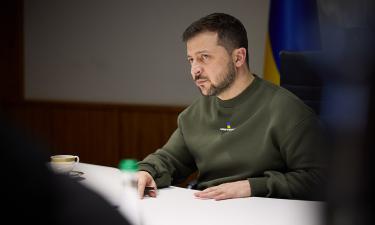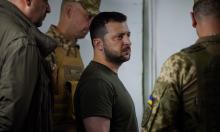Does the USA supply weapons to Georgia?
August, the 12th is the anniversary of the end of the war in South Ossetia. The question that interests Russia in connection with this anniversary is the USA’s activities to supply military hardware to Georgia. The question arises as the present condition of the Georgian army slightly differs from that before the war.

As estimated by Russian experts, Georgia has the 28,500-strong army. The National Gendarmerie has 6,500 people, and the Border Surveillance Department of the Ministry of Internal Affairs - 5,500 and 100,000 reservists.
It seems obvious at first sight, that the USA helps Georgia, for its Iroquois helicopters are of the US production. In addition, the Pentagon declared an intention to provide military assistance to Georgia in the sum of $16 million.
However, one may not say that it is the USA that ships military hardware to Georgia directly. There are other states - Ukraine and several countries of Eastern Europe - which coordinate their military activities with Washington.
In 2001, after the 9/11 terrorist acts, the USA began to spread its supremacy all over the world. The USA reportedly delivered six UH-1H, Iroquois, choppers to Georgia already on September 16, 2001. That was the time when the United States began to take efforts to penetrate into Suthern Caucasus – the region which could be subsequently used to put pressure upon Russia.
The region was chosen intentionally. From the West Russia is protected by Belarus and Ukraine (though the latter aspires to join NATO). In the east China and Japan protect Russia as they have their own interests.
Georgia was the only possible variant that suited the US as early as then.
The USA began helping Tbilisi. The Georgian army was visibly changing from September 11, 2001 to August 8, 2008. American military men undertook the training of the Georgian contingent and reconstructed the infrastructure in compliance with NATO standards. By 2008 the military budget of Georgia accounted for one billion dollars, and the numerical force of its army reached 33,000 people.
By the beginning of the war with Russia Georgia had (by estimations of the Russian experts): 156 tanks, 105 infantry combat vehicles, 40 armored transport vehicles, 10 reconnaissance armored vehicles and 60 traction engines. Georgia also had 16 multiple missile systems.
The Air Forces of Georgia had 10 attack aircrafts, two MiG-21, four Yak-52, and a squadron of 20 helicopters (including the Iroquois). The Naval Forces had two guided missile boats (of the La Combattante II 1971 and 206 МР type), two gunboats, two major landing craft and about 20 guard and patrol boats.
It was silly to confront the Russian army with those forces. However, the US strategists assumed that two Chechen wars must have weakened the Russian Army. They probably decided that the Russian army would not be able to countervail Georgia in South Ossetia, and the victory of Tbilisi would open the way to the North Caucasus for the USA.
But Georgia was defeated. And the USA had to deny the fact, that it had armed Georgia. Elizabeth Hitner, a Pentagon spokeswoman, claimed after the end of the war in South Ossetia that the USA was not supplying weapons to Georgia.
Russia ’s Ambassador at NATO, Dmitry Rogozin, declared on July, 24 that Russia would impose sanctions against any foreign arms manufacturer that supplied Georgia with offensive weapons.
In return the US Ambassador to Russia John Bayerly claimed that the military cooperation between the USA and Georgia did not suggest arms shipments to Tbilisi. The cooperation, the official said, stipulated joint military drills and the training of the Georgian army for joint missions in Afghanistan, where Russia supported NATO.
However, one may presume that the USA has not refused from its plans to stand firm in the Caucasus.
Subscribe to Pravda.Ru Telegram channel, Facebook, RSS!





